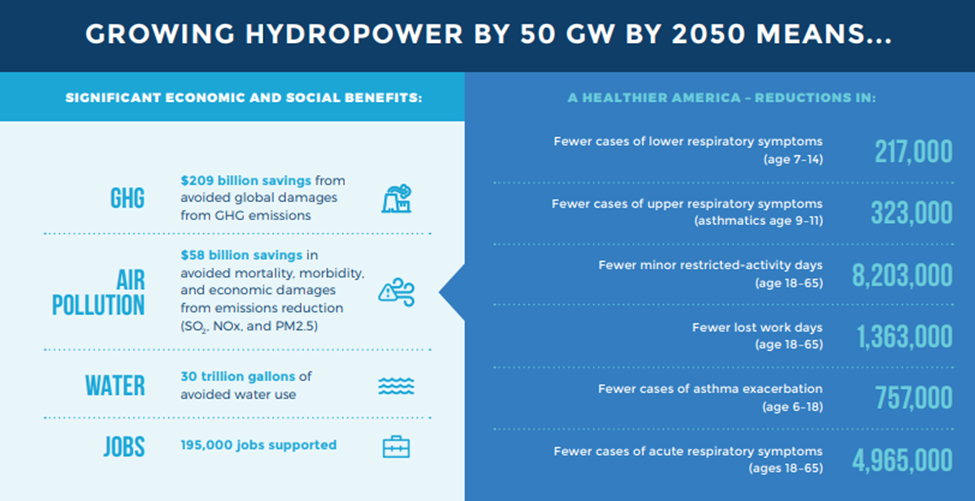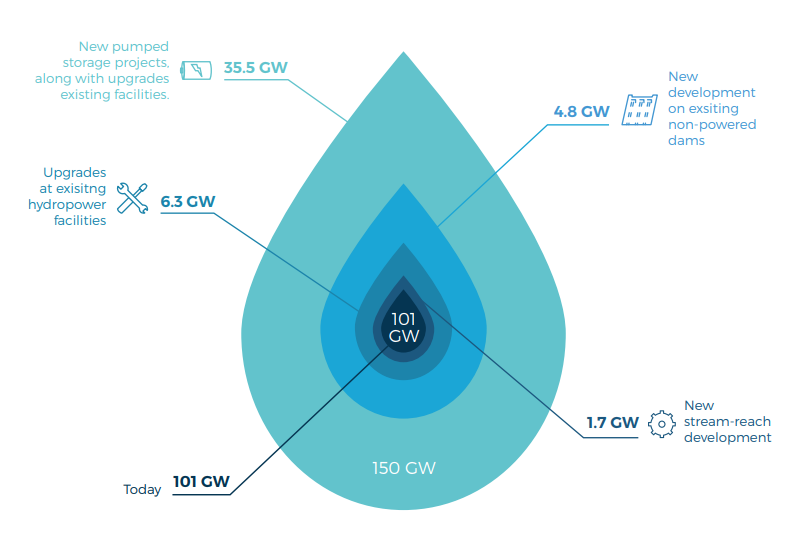Already a significant source of renewable energy in the United States, the Hydropower Vision report found that the nation’s hydropower capacity could sustainably grow from 101 gigawatts (GW) to almost 150 GW by 2050. That would significantly increase the nation’s clean energy generation and reduce greenhouse gas emissions (GHG) by 5.6 billion metric tons—resulting in billions of dollars of economic savings, health benefits, and job growth.

To increase national hydropower capacity by 2050 requires a combination of new hydropower generation and pumped storage hydropower (PSH). The report detailed five areas for hydropower growth potential in the United States:
- Optimizing existing hydropower facilities to maintain, modernize, and improve operational efficiency. The existing fleet of hydropower facilities in the United States is aging, but upgrading and modernizing operations and technologies at these facilities could generate additional hydropower capacity and improved environmental performance.

- Electrifying non-powered dams to generate power. Only 3% of dams in the United States are equipped to generate power. Adding power generating facilities to existing non-powered infrastructure can often be achieved at lower cost, with less risk, and in a shorter timeframe than development requiring new dam construction.
- Installing hydropower in existing water infrastructure like conduits and canals. Developing small hydropower projects could add additional hydropower capacity and support distributed energy systems for greater energy resilience in rural and remote areas.
- Developing hydropower projects on new stream reaches. Developing new hydropower projects on previously undeveloped sections of waterways could add significant new generating capacity.
- Increasing PSH development. Increasing PSH by 35.5 GW could more than double the nation’s energy storage capacity—supporting further integration of other renewables by providing power during times of low wind and solar energy generation.

